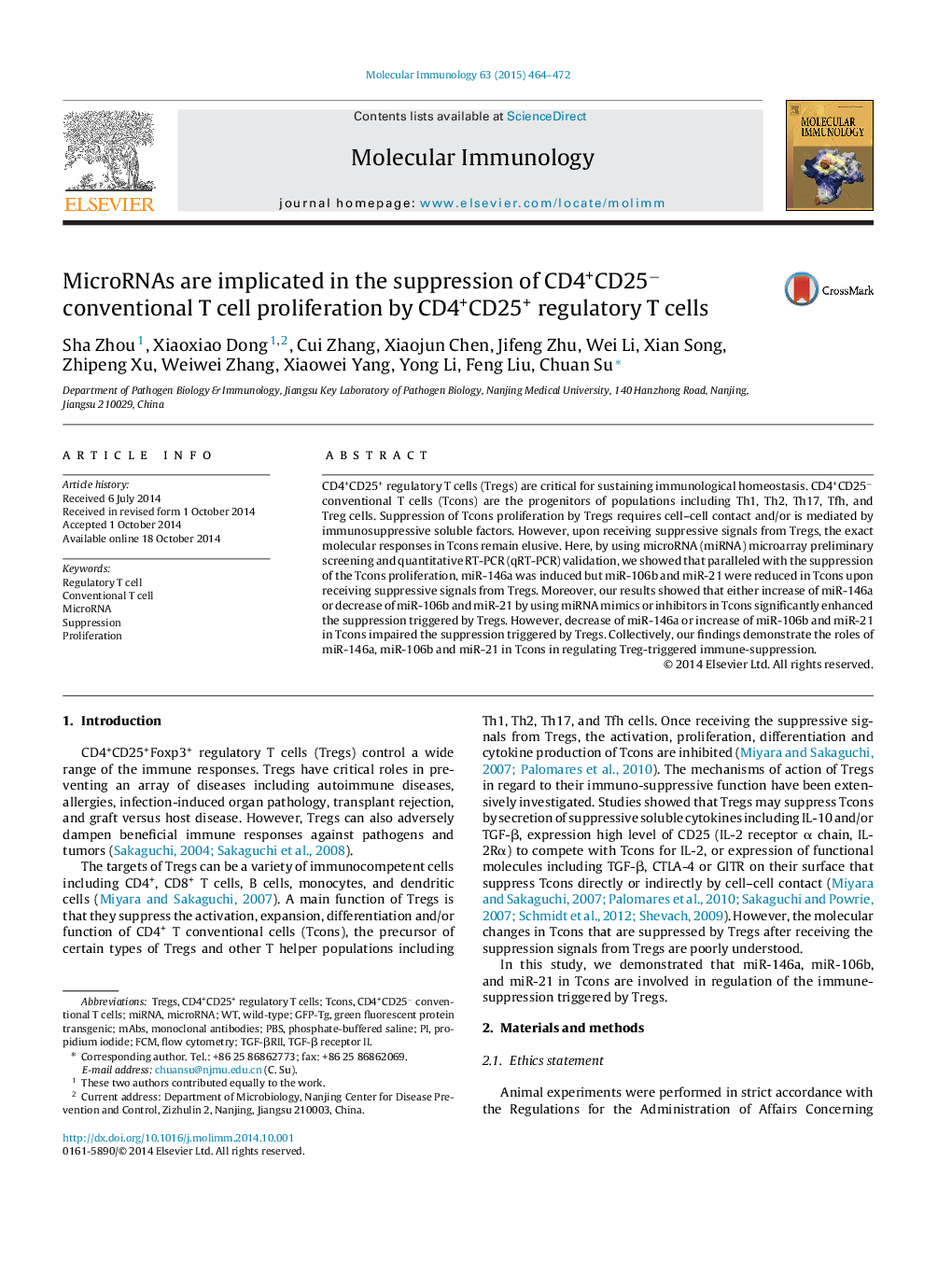| Article ID | Journal | Published Year | Pages | File Type |
|---|---|---|---|---|
| 2830733 | Molecular Immunology | 2015 | 9 Pages |
•Suppressive signals from Tregs altered expression profile of miRNAs in Tcons.•Increased miR-146a but decreased miR-106b and miR-21 were in Treg-suppressed Tcons.•Results indicate the roles of miR-146a, -106b and -21 in Treg-mediated suppression.
CD4+CD25+ regulatory T cells (Tregs) are critical for sustaining immunological homeostasis. CD4+CD25− conventional T cells (Tcons) are the progenitors of populations including Th1, Th2, Th17, Tfh, and Treg cells. Suppression of Tcons proliferation by Tregs requires cell–cell contact and/or is mediated by immunosuppressive soluble factors. However, upon receiving suppressive signals from Tregs, the exact molecular responses in Tcons remain elusive. Here, by using microRNA (miRNA) microarray preliminary screening and quantitative RT-PCR (qRT-PCR) validation, we showed that paralleled with the suppression of the Tcons proliferation, miR-146a was induced but miR-106b and miR-21 were reduced in Tcons upon receiving suppressive signals from Tregs. Moreover, our results showed that either increase of miR-146a or decrease of miR-106b and miR-21 by using miRNA mimics or inhibitors in Tcons significantly enhanced the suppression triggered by Tregs. However, decrease of miR-146a or increase of miR-106b and miR-21 in Tcons impaired the suppression triggered by Tregs. Collectively, our findings demonstrate the roles of miR-146a, miR-106b and miR-21 in Tcons in regulating Treg-triggered immune-suppression.
